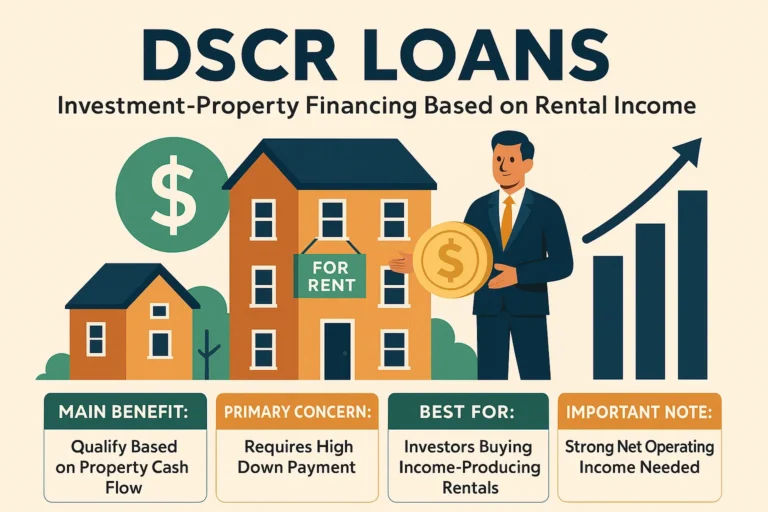A reverse mortgage is a loan that allows homeowners aged 62 or older to borrow against their home equity without making monthly mortgage payments. It's primarily used by seniors to supplement retirement income while remaining in their homes.
- Main Benefit: Access to home equity without monthly payments
- Primary Concern: Decreasing home equity over time
- Best For: Seniors needing additional retirement income
- Important Note: Borrowers must maintain the home and pay property taxes and insurance
Reverse Mortgage Advantages and Disadvantages
This table outlines the key benefits and drawbacks of reverse mortgages, helping homeowners make informed decisions about whether this financial tool aligns with their retirement goals and circumstances.
| Pros | Cons |
|---|---|
| No monthly mortgage payments required | High upfront costs including origination fees and closing costs |
| Access to tax-free cash from home equity | Interest accumulates over time, increasing loan balance |
| Ability to stay in your home | Reduces home equity available for inheritance |
| Flexible payment options (lump sum, line of credit, monthly payments) | May impact eligibility for needs-based benefits like Medicaid |
| Non-recourse loan: heirs not liable beyond home value | Property must remain the primary residence |
| Funds can be used for any purpose | Heirs must repay the loan or sell the home |
| Improves financial flexibility in retirement | Higher interest rates compared to traditional mortgages |
| Can delay Social Security benefits for higher payouts | Ongoing property taxes and insurance payments required |
| No risk of losing home if loan terms are met | Home maintenance is mandatory to meet loan terms |
| Can be used to purchase a new home | Loan balance grows, reducing future financial flexibility |
| No income or credit score requirements for eligibility | Not suitable for short-term financial needs |
| Guaranteed funds availability with HUD-backed loans | May complicate estate planning for heirs |
| Helps manage rising living costs in retirement | Limited to homeowners aged 62 or older |
| Provides peace of mind and financial security | Loan repayment required upon moving or death |
| Can supplement insufficient pension or retirement income | Potential for foreclosure if loan terms are violated |
| Allows aging in place without selling the home | No deduction for interest until the loan is repaid |
| No tax on received funds as they are loan proceeds | May not be cost-effective for low-value homes |
| Can be used to cover long-term care costs | Variable interest rates add unpredictability |
| Reduces reliance on other financial assets | Fees and costs reduce the amount of usable funds |
| No repayment required until the home is sold or vacated | Can lead to loss of home if obligations are unmet |
| Can help maintain a comfortable lifestyle in retirement | Not all lenders offer the same protections or terms |
| Provides a financial safety net for unexpected expenses | May not be suitable for those planning to move soon |
| No risk of owing more than the home's value | Could affect family dynamics and inheritance expectations |
| Can be used to refinance an existing mortgage | Requires careful financial planning and understanding |
| Allows for better estate planning and financial management | May not provide sufficient funds for all needs |
| Can improve quality of life by unlocking home equity | Can be complex and difficult to understand |
| Offers a solution for retirees with limited cash flow | Borrowers remain responsible for home upkeep |
| Provides a way to access funds without selling the home | May not be the best option for those with other assets |
| Protects against housing market fluctuations | Could lead to financial strain if mismanaged |
| Line of credit option can grow over time | Not all homes qualify for reverse mortgages |
Reverse Mortgage Market Statistics
This table provides key statistics and market data for reverse mortgages, highlighting their current market size, growth trends, and demographic information.
| Statistical Analysis & Market Data | |
|---|---|
| Global reverse mortgage market size (2023) | $1.83 billion |
| Projected CAGR (2024-2030) | 5.9% |
| Number of reverse mortgage originations in the US (2023) | 32,991 |
| Largest reverse mortgage lender market share (July 2024) | Mutual Of Omaha Mortgage Inc. (22%) |
| Minimum age requirement for most reverse mortgages | 62 years |
| Maximum loan-to-value ratio for borrowers aged 92+ | 72% |
| Typical loan-to-value ratio for 62-year-old borrower | 37% |
| North America's reverse mortgage market share (2023) | 35.2% |
| Projected global population aged 65+ by 2050 | Double the current number |
| Region with highest CAGR in reverse mortgage market | Asia Pacific |
Reverse Mortgage Technical Requirements
This table outlines the key technical specifications and eligibility requirements for obtaining a reverse mortgage, including property and borrower criteria.
| Technical Specifications & Requirements | |
|---|---|
| Minimum age requirement | 62 years old for FHA-insured mortgages |
| Primary residence requirement | Must live in the home for majority of the year |
| Maximum absence period (non-medical) | 6 consecutive months |
| Maximum absence period (medical) | 12 consecutive months |
| Eligible property types | Single-family homes, multifamily homes (up to 4 units), FHA-approved condos, manufactured homes (post-1969) |
| Ineligible property types | Mobile homes, co-ops, multifamily homes with more than 4 units |
| Mandatory counseling requirement | HUD-approved counseling session |
| Financial assessment | Evaluation of borrower's ability to meet loan terms |
| Ongoing financial obligations | Property taxes, homeowner's insurance, HOA fees, home maintenance |
| Equity requirement | Substantial equity in the home (specific amount varies) |
Reverse Mortgage Cost and Value Analysis
This table presents a comprehensive breakdown of the costs associated with reverse mortgages, including upfront fees, ongoing expenses, and potential financial impacts.
| Cost & Value Analysis | |
|---|---|
| Upfront mortgage insurance premium | 2% of home's appraised value |
| Annual mortgage insurance premium | 0.5% of outstanding loan balance |
| Maximum origination fee | $6,000 |
| Closing costs | Varies (includes appraisal, title search, inspections, etc.) |
| Interest rates | Generally higher than traditional mortgages |
| Loan servicing fees | Varies by lender |
| Potential impact on estate value | Reduction in inheritance for heirs |
| Flexibility of fund usage | Can be used for various purposes (retirement income, debt payoff, etc.) |
| Impact on government benefits | May affect eligibility for SSI or Medicaid |
| Home equity retention | Decreases over time as loan balance grows |
Reverse Mortgage vs. Traditional Mortgages
This table compares reverse mortgages with traditional mortgages, highlighting key differences in structure, repayment, and overall impact on homeowners' finances.
| Comparative Analysis & Alternatives | |
|---|---|
| Repayment structure | Reverse: No monthly payments; Traditional: Regular monthly payments |
| Loan balance over time | Reverse: Increases; Traditional: Decreases |
| Home equity | Reverse: Decreases; Traditional: Increases |
| Age requirements | Reverse: Typically 62+; Traditional: No age restriction |
| Income requirements | Reverse: Less stringent; Traditional: Strict income verification |
| Loan purpose | Reverse: Access home equity; Traditional: Purchase or refinance |
| Risk of foreclosure | Reverse: Lower risk; Traditional: Higher risk if payments missed |
| Impact on credit score | Reverse: Minimal impact; Traditional: Significant impact |
| Mortgage insurance | Reverse: Required for HECMs; Traditional: Only for certain loans |
| Flexibility of funds usage | Reverse: High flexibility; Traditional: Limited to loan purpose |
Future Outlook for Reverse Mortgages
This table explores the projected trends and future developments in the reverse mortgage industry, including market growth, technological advancements, and regulatory changes.
| Future Outlook & Industry Trends | |
|---|---|
| Market growth projection | Steady growth expected, driven by aging population |
| Technological advancements | Increased use of digital platforms for applications and management |
| Regulatory changes | Potential for more consumer protections and stricter oversight |
| Product innovation | Development of more flexible and tailored reverse mortgage products |
| Demographic shifts | Growing demand as baby boomers enter retirement age |
| Financial planning integration | Increased incorporation of reverse mortgages in retirement strategies |
| Market expansion | Growth in international markets, especially in Asia Pacific |
| Consumer education | Enhanced focus on educating seniors about reverse mortgage options |
| Alternative equity release products | Emergence of new competing financial products for seniors |
| Long-term care financing | Potential use of reverse mortgages to fund long-term care needs |




